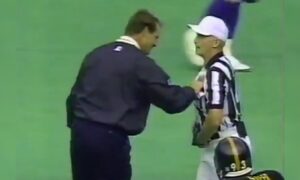For many, it seems that their favorite aspect of the draft is the opportunity that comes when it’s over to pick apart and criticize every facet of a draft pick’s game in order to ensure confidence in his clearly not premature declaration of a bust.
The Pittsburgh Steelers fan base is certainly not immune to this phenomenon, which can last well into a player’s career. Perhaps there’s some cathartic release from yelling at a television screen that somebody sucks and that you knew that he sucked when that idiot Kevin Colbert drafted him and that Bill Cowher would never have taken him.
Every prospect has his shortcomings, or at least targeted areas of improvement, but the Pittsburgh Steelers’ 2015 draft class is a cornucopia of players filled with weaknesses in their game as they transition from the college level to the pros.
An outside linebacker in the first round who can’t get sacks, a wide receiver in the third who can’t catch, and a couple of midget cornerbacks to bookmark him who can’t play on the outside in the NFL. Let’s not forget the tweener in the sixth round and a safety who can’t tackle to finish off the class in the seventh.
It shouldn’t really be surprising that every player in this class has things that he needs to work on to get better now that football is his full-time job and he is competing against other players whose full-time job is playing football.
But every day is an opportunity to improve upon weaknesses, which is what these players spend their time doing at the team facility throughout the year. It’s why they pay coaches to help these players get better. It’s their job.
To think that a player’s career is going to be defined by their draft profile is short-sighted and unfair. There are stories every year of players coming out of nowhere to defy the expectations placed against them. the Steelers have their own stories.
Anybody remember the scouting report on Daniel McCullers, who couldn’t even get off on the snap and played with his pad level so high that he spent a considerable amount of time on his back despite weighing 350 pounds? Do you recall the lowlights from Kelvin Beachum’s rookie preseason?
Players get better, and it’s the job of their position coaches to help them get better. Sammie Coates has had some issues with dropped balls during his college career. That can be worked on. Wide receivers coach Richard Mann certainly seemed to help Martavis Bryant last year, who came into the league with similar questions about his hands.
Carnell Lake, former Pro Bowl defensive back, can work with Gerod Holliman on his tackling technique and instill in him a physical demeanor. He can help Senquez Golson mitigate the height factor by playing with precision and timing. I also think Joey Porter might have a thing or two to show Bud Dupree about getting to the quarterback.
Step one is getting these guys into the building. The next step is to get them coached up. Not every one is a success story, as we all know. But I would just caution not to live in somebody’s scouting report, as they have the chance to evolve over time.






